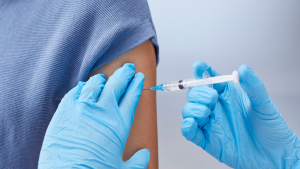The Centers for Disease Control and Prevention (CDC) just released guidelines for the use of doxy PEP. Doxy PEP—or doxycycline post-exposure prophylaxis—is a strategy to prevent bacterial STIs. As expected, the guidelines are limited to gay, bisexual, and other men who have sex with men (MSM) and transgender women (TGW). This is because this is the population that saw success in clinical trials.
Doxy PEP involves taking an oral antibiotic after condomless sex to prevent bacterial STIs. Research has shown that this can reduce the possibility of contracting chlamydia by 88%, syphilis by 87%, and gonorrhea by 55%.
The new guidelines say that providers should counsel specific patients about doxy PEP. These include MSM and TGW who have had a bacterial STI in the last 12 months. Providers should discuss the benefits and harms of using doxy PEP to prevent new infection with this group.
CDC recommends that providers offer people in this population prescriptions for doxy PEP. Individuals are advised to take 200 mg of doxycycline within 72 hours after having oral, vaginal, or anal sex. Patients can continue to take doxy PEP whenever they have sex, but should be told not to exceed 200 mg every 24 hours.
The CDC suggests that doxy PEP be part of comprehensive sexual health approach. This should also include:
- STI prevention counseling
- STI screening and treatment
- vaccines
- linkage to HIV PrEP or HIV care when needed
The guidance states that patients should be tested for bacterial STIs upon receiving a prescription for doxy PEP. Additionally, they should continue to be tested every 3-6 months moving forward. Tests may look for genital, oral, or anal infection depending on each person’s potential exposure.
Patients and providers can together reassess the ongoing need for doxy PEP every 3-6 months.
Again, these recommendations only apply to MSM and TGW who have had a bacterial STI in the last 12 months. This is the population for which there is strong research. The guidelines do say that providers might also want to discuss doxy PEP with MSM and TGW who have not had a bacterial STI diagnosed during the previous year, but will be participating in sexual activities that are known to increase the likelihood of exposure to STIs.
For now, the CDC is offering no recommendations on the use of doxy PEP for cisgender women, cisgender heterosexual men, transgender men, and other queer and nonbinary persons because there is not enough research. That said, the agency acknowledges this strategy could be effective in any or all of these populations.
While we wait for research to confirm this, the CDC suggests that providers “…use their clinical judgement and shared decision-making to inform use of doxy PEP with populations that are not part of CDC recommendations.”
Doxy PEP is an exciting new strategy that comes at a time when bacterial STIs are on the rise. There were 2.5 million cases of chlamydia, gonorrhea, and syphilis reported in the U.S. in 2022. Cases of chlamydia and gonorrhea—the two most common reportable STIs—have remained high for many years. Syphilis cases have also skyrocketed recently. The number of primary and secondary syphilis infections in 2022 was 80% higher than in 2018. Hopefully, these guidelines will encourage providers to talk to their eligible patients and lead to more widespread use of doxy PEP.






